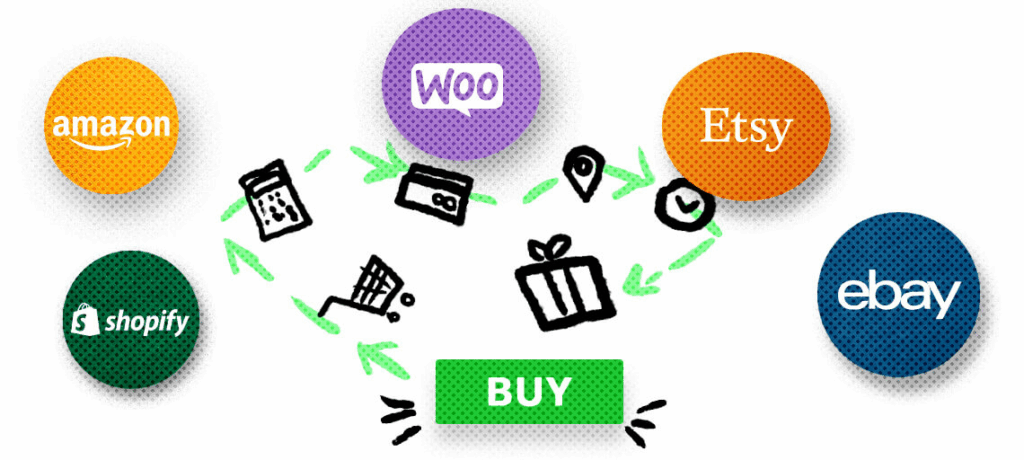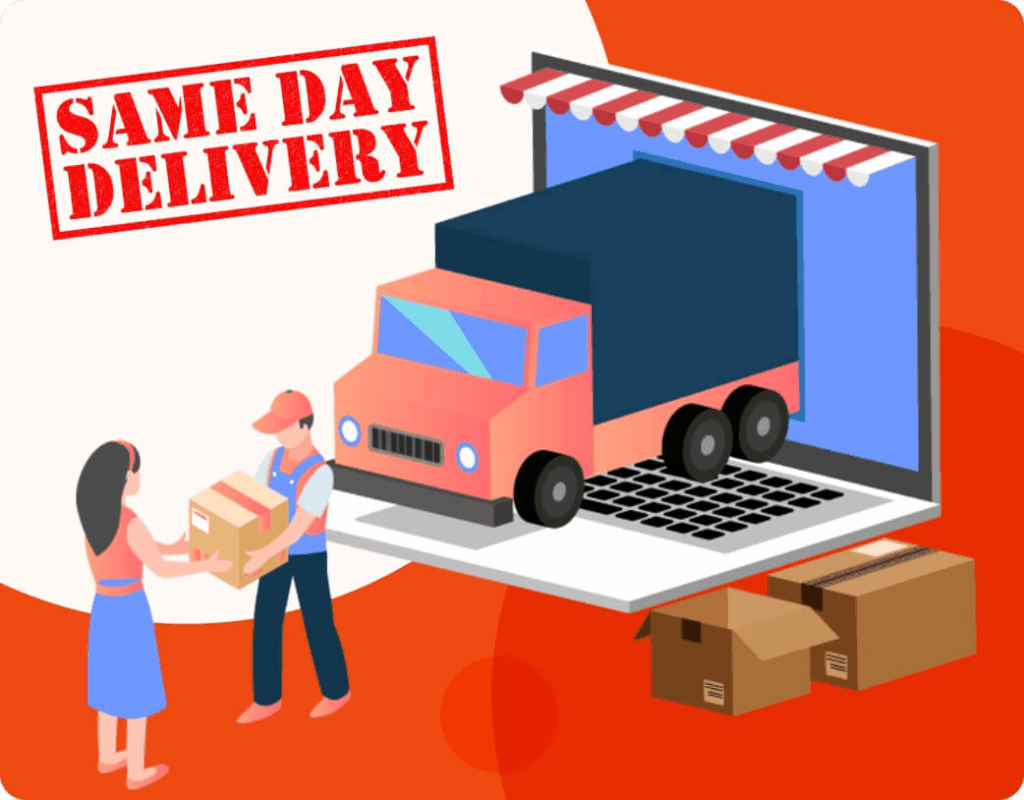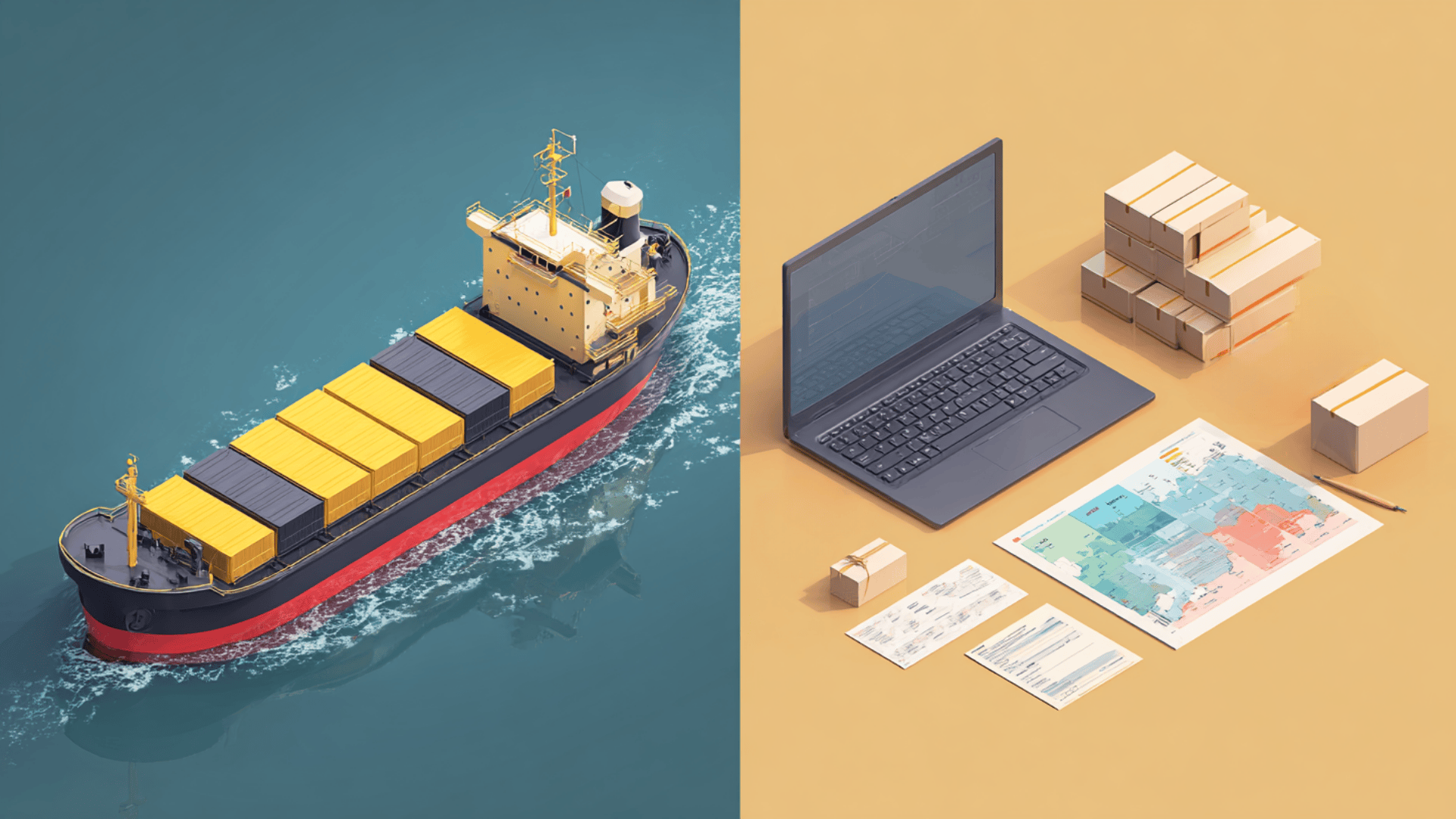2025 年 5 个改变游戏规则的电子商务发货整合技巧
电子商务已进入一个速度、准确性和便利性决定成败的时代。客户希望有适合他们时间安排的送货方式、精确的跟踪更新和无摩擦的结账流程。对于在线卖家来说,这需要的不仅仅是可靠的产品目录。它要求 电子商务发货集成 将每一部分业务都联系在一起。

如果您的团队仍在手动输入发货数据、在不同平台间切换或依赖过时的承运商连接,那么您将损失时间和收入。正确的整合能将货运从令人头疼的问题转变为竞争优势。以下是 2025 年的五个强大提示,将帮助您的企业掌握现代履行方式。
为什么 2025 年电子商务航运整合很重要?
近年来,集成的重要性急剧增加。有几个因素使其成为 2025 年的必备条件:
- 不断提高的期望值: 现在,快速灵活的运输已成为基本要求。客户希望当天或次日送达,而且通常是低价或免费送达。
- 市场影响力: 亚马逊、eBay 和 Shopify 等平台已经制定了很高的标准,买家希望小卖家也能达到这些标准。
- 业务复杂性: 许多企业通过多种渠道进行销售,如果不进行整合,同步订单和库存就会变得混乱不堪。
- 利润压力: 利润空间狭小。提高运输效率和减少差错可以使利润和损失相差无几。
简而言之,电子商务发货集成可确保店面、库存系统、承运商和客户通信工具作为一个统一的流程运行。
秘诀 1:如何在多个渠道自动发货?
多渠道销售已成为常态。一个品牌可能会在 Shopify 上列出产品、 WooCommerce亚马逊和 Etsy。每个渠道都有独特的订单格式、发货设置和客户要求。

集中自动化就是解决方案。
- 将订单自动导入一个仪表板,而无需重新输入。
- 实时同步库存,避免超卖。
- 即时向每个通道推送跟踪详情。
- 直接打印标签,无需切换运营商网站。
例如,一个销售家居装饰品的品牌每天可能会收到 200 份订单,分别来自 Shopify 和亚马逊。如果没有自动化,团队将花费数小时来复制地址。有了电子商务发货集成,这些订单在几分钟内就能导入、标注和更新。
其结果是,处理速度更快,错误更少,客户体验更顺畅。
提示 2:您应该整合哪些运营商以获得最大的灵活性?
没有任何一家承运商可以涵盖所有情况。仅使用 UPS 或 USPS 运输的企业可能会面临成本增加、客户选择减少的风险。
通过整合实现承运商多样化的好处显而易见。
- 轻型包裹可使用 USPS,重型包裹可使用 UPS,联邦快递可提供隔夜保证服务。
- DHL Express 或专门从事某些市场的地区性快递公司可为国际货运提供帮助。
- 最后一英里供应商和本地快递公司帮助满足 当天 或次日承诺。

当电子商务发货集成连接到多个承运商时,企业将获得收益:
- 结账选项可显示各运营商的实时费率。
- 能够根据包裹重量、距离或递送速度动态选择承运商。
- 提高了可靠性,因为如果一个承运商出现延误,还有备用承运商。
当购物者看到灵活的送货选项时,他们更有可能完成购买。通过整合提供标准、快递和经济型送货服务,可以减少放弃购物车的数量。
秘诀 3:如何提供实时发货透明度?
交付速度很重要,但能见度也很重要。许多支持单都来自客户提出的相同问题: 我的订单在哪里?

集成可实现实时解答。
- 运营商提供的状态更新可直接导入系统。
- 品牌电子邮件或短信通知买家每个里程碑。
- 自助跟踪门户可减少客户服务工作量。
- 预测性人工智能工具可以更准确地预测交付窗口。
想象一下,一家时装零售商每天要发送 1000 个包裹。如果没有实时跟踪,客服人员可能要回答数百个询问。有了电子商务发货集成,每个订单的更新都是自动化的,既节省了时间,又提高了满意度。
秘诀 4:如何在不影响速度的情况下降低成本?
运输通常是仅次于库存的第二大开支。既要降低成本,又要保持速度,这是电子商务企业面临的最大挑战之一。
2025 年的实用方法包括
- 评价购物: 自动比较运营商费率,选择最便宜或最快的方案。
- 包装优化: 使用大小合适的箱子,以避免尺寸重量收费。
- 自动标签: 批量打印,减少手动输入的时间。
- 地区运输公司: 对于 最后一英里交付而且,它们可能比国内快递公司更便宜。
- 批量谈判: 集成系统可以整合各承运商的业务量,以获得更优惠的折扣。
以一家面向全国发货的电子产品商店为例。通过整合短途订单的区域承运商,他们在不影响速度的情况下将运输成本降低了 15%。
电子商务发货集成可确保自动做出这些决定,使员工无需不断进行计算。
秘诀 5:如何让航运技术栈面向未来?
技术发展日新月异,电子商务卖家无法承受过时的僵化系统。面向未来的堆栈意味着投资于灵活、可扩展的工具。

2025 年的关键要素包括
- 开放 应用程序接口 与新平台轻松连接。
- 人工智能驱动的洞察力可建议承运商并预测交付时间。
- 基于云的托管服务可确保正常运行时间和可靠性。
- 遵守国际隐私和安全标准。
- 可扩展性,以应对季节性销售高峰期的需求。
采用适应性强的航运一体化的企业将能更好地进行跨境扩张并获得新的市场机遇。
应避免的常见陷阱
即使有强大的工具,一些错误也是常见的:
- 依赖单一运营商,没有其他选择。
- 忽视国际货运的海关和进口合规性。
- 过度定制集成,创建脆弱的工作流程。
- 未能在大量购物活动之前测试系统。
避免这些隐患可在关键时期保持业务稳定。
案例:中型零售商转型中型零售商转型
美国有一家销售生活用品的中型零售商。在整合之前,该团队使用三个独立的系统来处理订单、发货和跟踪。每天处理 300 份订单需要 8 小时的人工工作。

实施电子商务发货集成后:
- 订单在 Shopify 和亚马逊上自动同步。
- 从一个仪表板批量打印标签。
- 即时向买家发送跟踪详情。
- 运营商的选择优化了每月 12% 的成本。
该零售商将每天的处理时间缩短至两小时,并在节假日需求旺盛时顺利扩展。
结论
运输不仅仅是后台职能。它是一个面向客户的流程,影响着客户的满意度、忠诚度和增长。投资更智能的企业 电子商务发货集成 获得更快的工作流程、更低的成本和更强的客户信任。
这五点建议--跨渠道自动化、承运商多样化、实时透明、成本控制和面向未来--有助于在 2025 年将航运业转化为竞争优势。
要探索更智能的履行解决方案,请访问 邮政包裹.
行业洞察
收件箱消息
Nulla turp dis cursus.整体释放,预留空间







